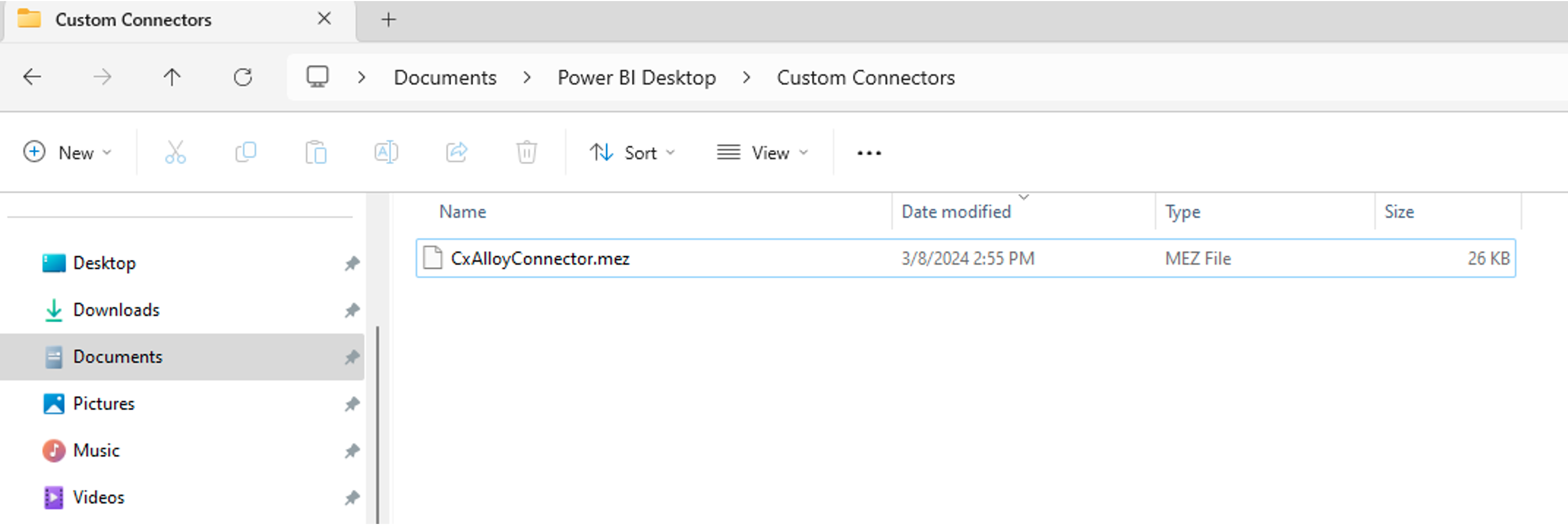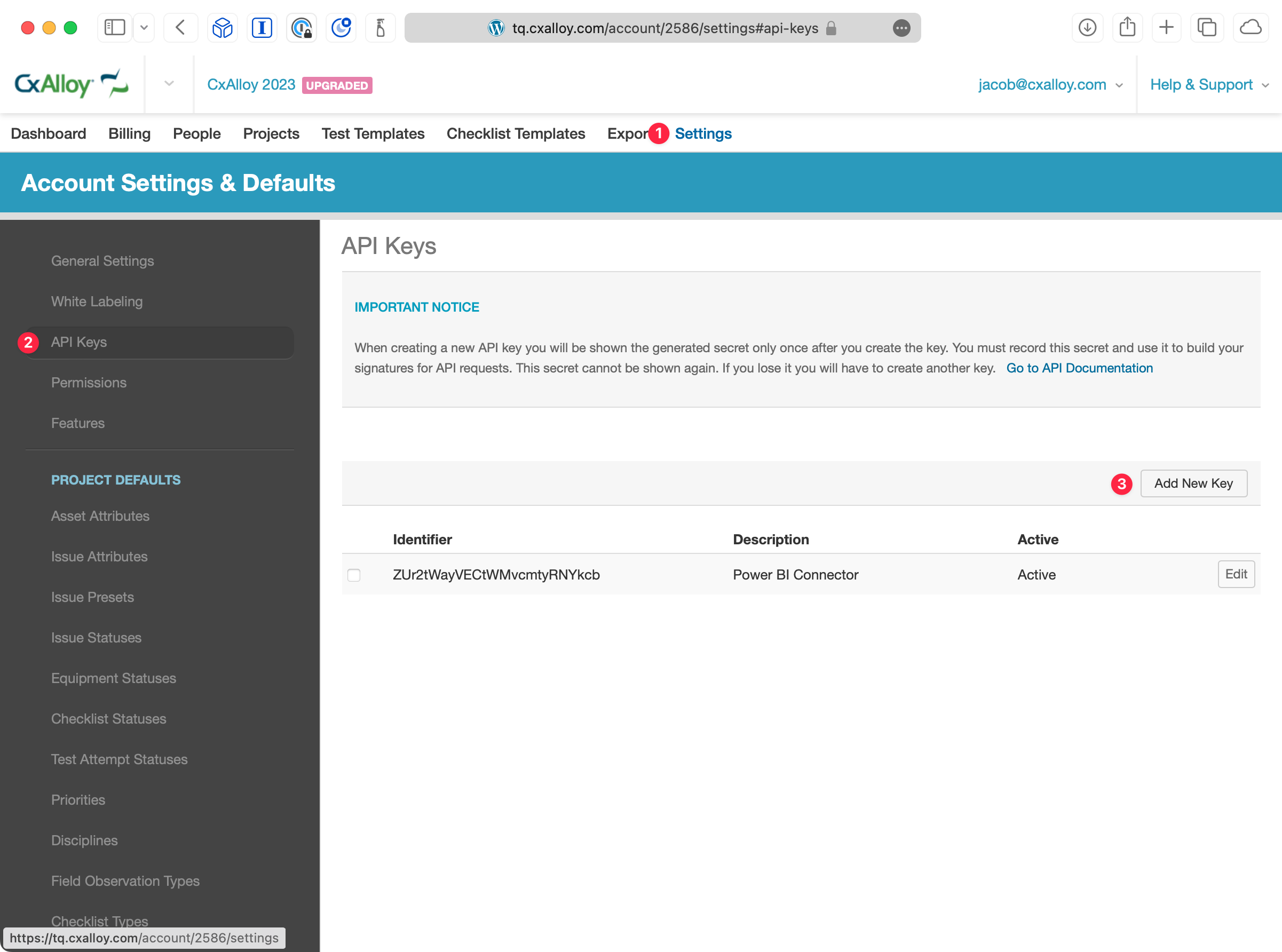Power BI Connector
CxAlloy Power BI Connector
The CxAlloy Power BI connector allows you to use CxAlloy as a data source within Power BI.
Access to the Power BI connector must be enabled for a CxAlloy account before it will work. Please contact sales@teamcxalloy.com to request access.
Downloading and Installing the Connector
Download the connector from our related support article.
Copy the connector .mez file (
CxAlloyConnector.mez) to Power BI's Custom Connectors folder: Documents\Power BI Desktop\Custom Connectors

Open Power BI Desktop and go to File ➜ Options and Settings, then Options.
Under “Security”, check the “Allow any extension to load without validation or warning”

Get CxAlloy API Key
In CxAlloy, navigate to your account management area. Go to Settings ➜ API Keys. Click “Add New Key”. Give it a name, for example “Power BI Connector Key”, and click "Save".

Upon creation you will be presented a shared secret. Copy this value and store it in a safe place. You will need both this value and the key's identifier later when prompted by the Power BI Connector.

Add Connector as Data Source
In Power BI Desktop, click the “Get Data” button.

The CxAlloy Connector should now be available as a data source.

Click “Connect” and you should be prompted for the API Identifier and Key.

Enter the CxAlloy API key identifier and shared secret that you previously saved.
You should now be able to connect to your CxAlloy data and load the data into a report.

Setting up Scheduled Refreshes in the Power BI Portal
When a Power BI report has been published to your Power BI Portal, you will need to install the Power BI Gateway in order to schedule refreshes of you CxAlloy data. See Microsoft’s online documentation about installing the Power BI Gateway.
Once the Gateway has been installed, the system on which the Gateway is being running will also need to have the CxAlloy Custom Connector. You will need to copy the Custom Connector .mez file into the Documents\Power BI Desktop\Custom Connectors folder on the Gateway system. Once that is done, you should be able to schedule data refreshes within the Power BI Portal.
